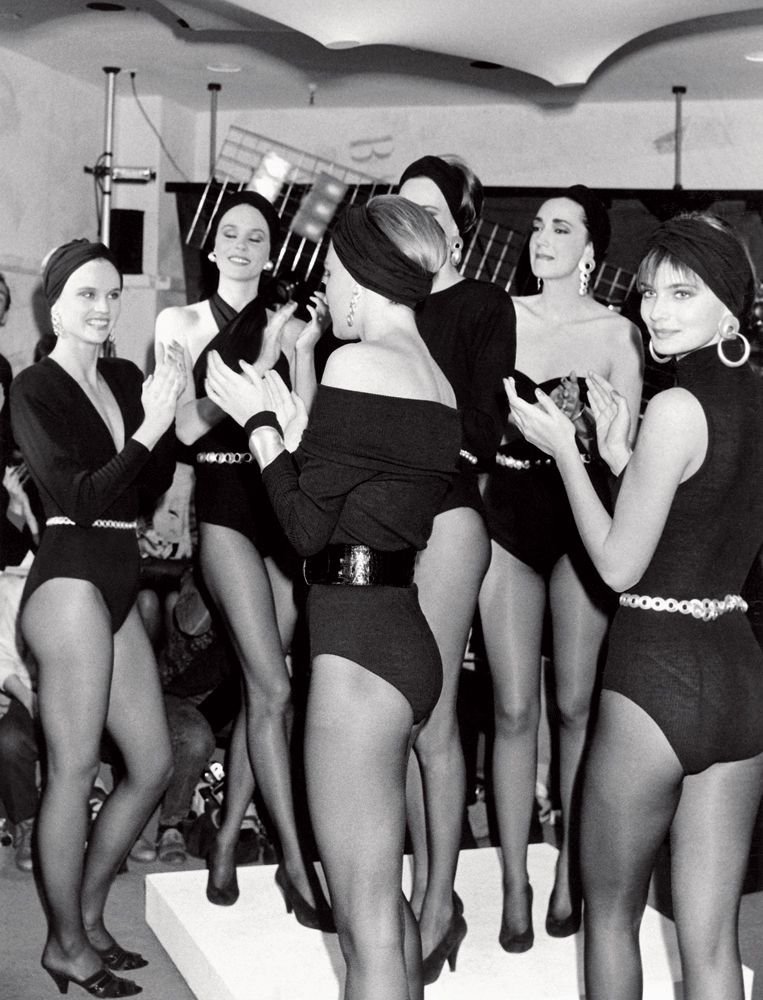The Capsule Wardrobe Paradox: Navigating Sustainability, Inclusivity, and Practicality
Source - DKNY
If you are a frequent follower of #FashionTok then chances are you may have stumbled across and heard lots about #CapsuleWardrobes…
For those of you that don’t know a capsule wardrobe is a curated collection of essential clothing items that are versatile and can be mixed and matched to create a variety of outfits. The origin of this concept can be traced back to the 1970s when London boutique owner Susie Faux introduced the idea and defined it as “a limited number of essential or staple items you can wear for multiple seasons.” It then gained notable popularity in the 1980s with Donna Karan’s influential ‘Seven Easy Pieces’ collection, which showcased the power of a well-curated wardrobe. The capsule wardrobe experienced a resurgence in the 2010s as fashion bloggers came to embrace the distinct uniform of neutral pieces, further emphasizing its appeal to the general public.
In recent times, the capsule wardrobe has garnered even more recognition among the younger generation with the #capsulewardrobe hashtag on TikTok gaining over 1.2 Billion views, continuously underscoring its growing popularity and reach.
Like many individuals, I too have ventured into infusing elements of minimalism into my style but during my most recent closet declutter I found myself thinking, is the capsule wardrobe as achievable and sustainable as we all think?
I think it’s important to consider both the advantages and disadvantages when looking at the capsule wardrobe as a whole. While there are undeniably numerous benefits to be found, it is equally essential to recognise the drawbacks.
Source - SIR The Label, Spring Summer 23’
One positive of capsule wardrobes is the sustainability surrounding having a capsule wardrobe and encouraging thoughtful consumption. Thoughtful consumption focuses on quality over quantity and by investing in versatile, durable pieces, individuals can build a collection that withstands micro trends and offers long-term value. A key positive surrounding thoughtful consumption within a capsule wardrobe is its promotion of conscious choices and sustainable fashion practices. By prioritizing quality over quantity, individuals can build a collection of clothing that not only has aesthetic appeal but is also created using sustainable practices and support brands that also support a green future. This mindset shift can in turn contribute to a more sustainable fashion industry by decreasing the demand for fast fashion and minimizing the overall environmental impact of excessive consumption.
Sustainability and capsule wardrobes go hand in hand, as the core principles of both concepts align intending to reduce environmental impact and promote responsible consumption. The capsule wardrobe truly does embody the philosophy of ‘less is more.’ Consciously investing in durable and high-quality clothing means individuals can prolong the lifespan of their garments, minimizing the frequency of replacements. The intentional approach to a capsule wardrobe contributes to a significant reduction in clothing turnover, effectively decreasing the volume of textile waste that would otherwise accumulate in landfills.
Source - Bec and Bridge
While thoughtful consumption within a capsule wardrobe is typically seen as a positive practice certain aspects can have negative implications related to body types, socio-economic status and racial issues.
An issue that can arise for an individual looking to embark on their capsule wardrobe journey is the limited size inclusivity prevalent in the fashion industry. It is common for numerous clothing brands to only offer a restricted range of sizes which poses a challenge for individuals with diverse body types who want suitable and well-fitting, high-quality pieces for their capsule wardrobes. As a result, those who do not conform to society's conventional standards may find themselves excluded fully from participating in the capsule wardrobe movement. The lack of size inclusivity overall undermines the goal of creating a fashion approach that is accessible and empowering for people of all body shapes and sizes.
Another factor to consider is while the capsule wardrobe trend as a whole encourages mindful consumption, it is crucial to recognize that the initial investment needed to establish a high-quality and long-lasting wardrobe can be a big factor for individuals with limited financial resources. When looking at the cost of purchasing durable and ethically produced clothing items you can see that the concept of a capsule wardrobe may be prohibitive for those facing financial hardship. This then creates a socioeconomic limitation that can perpetuate disparities and reinforce the perception that capsule wardrobes are truly only for the wealthy.
Source - Supplied
The idea of a capsule wardrobe is typically synonymous with a minimalist, neutral aesthetic that may not encompass the diverse style preferences and cultural identities of individuals from various ethnic backgrounds. This limited representation within the fashion industry has led to the marginalization and exclusion of those who do wish to express their unique identities and styles through the framework of a capsule wardrobe. By overlooking the richness and diversity of fashion influencers, the capsule wardrobe may inadvertently reinforce homogenous standards and hinder the inclusive expression of personal fashion choices.
When looking at capsule wardrobes as a whole and whether or not they are accessible and suitable it is vital to acknowledge these limitations to cultivate an inclusive and diverse approach to thoughtful consumption within the realm of a capsule wardrobe. By placing a strong emphasis and focus on inclusivity, taking into account diverse body types, economic circumstances, and cultural bias, the capsule wardrobe movement can evolve into a more accessible and empowering experience for a broader spectrum of individuals. It is through this intentional and conscientious approach to the capsule wardrobe concept that can truly harness its potential as a transformative force within the fashion industry.



